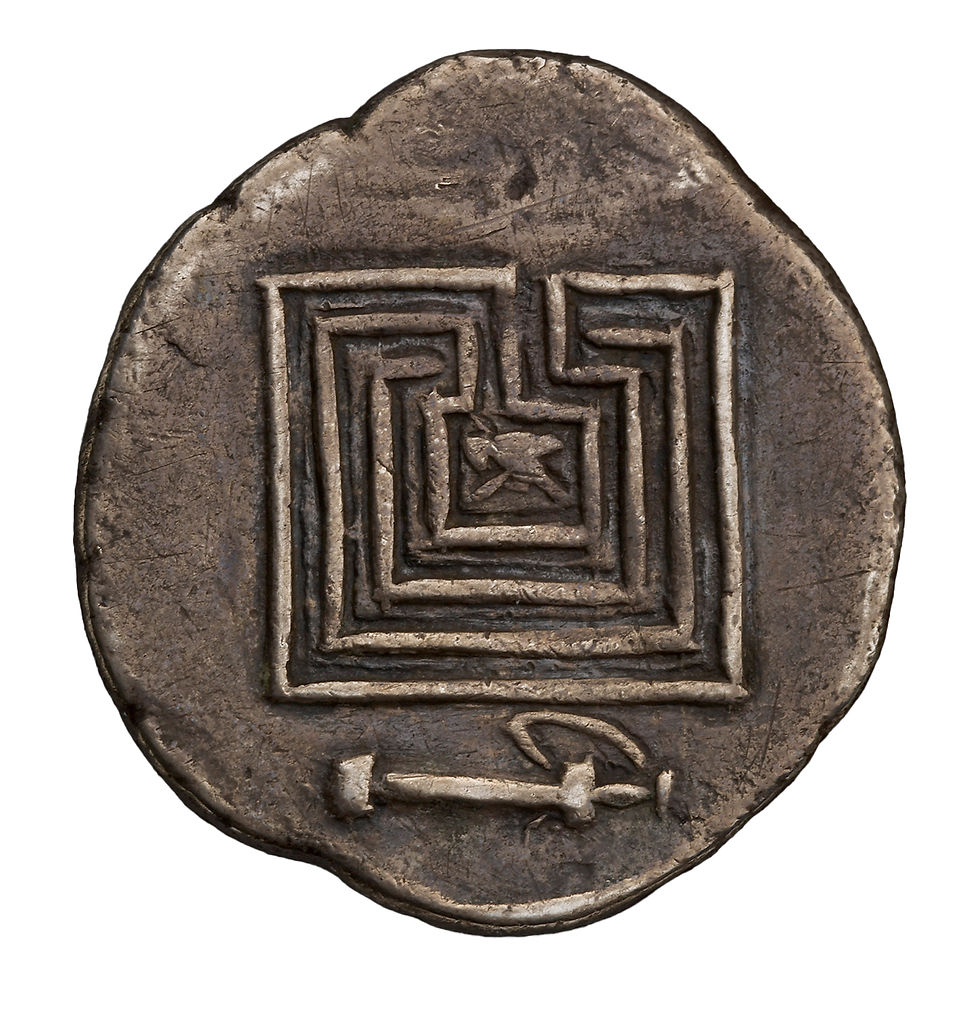The Labyrinth at Knossos
- Douglas

- Dec 19, 2023
- 2 min read
The following article originally appeared in Fontes, the internal Classics and Ancient History magazine of Winchester College. I wrote the article after a school trip to Labyrinth: Knossos, Myth, & Reality at the Ashmolean Museum in Oxford.
You know the story… Theseus enters the labyrinth at Knossos to kill the minotaur. As he makes his way through the labyrinth, he unwinds a ball of thread gifted by Ariadne, which will allow him to retrace his steps. The story is perfectly plausible (except perhaps for the part-man, part-bull minotaur), but there is a major problem. In later depictions of the labyrinth – coins, mostly – it is depicted as unicursal, as a single unbranched path with no possibility of taking a wrong turn. Why then did Theseus need a ball of yarn if he could not get lost?

The word labyrinth – and the one at Knossos is always called a labyrinth, never a maze – often suggests that the design is unicursal. There is therefore the possibility that the story is wrong. However, the labyrinth (if it existed) was most probably multicursal – filled with wrong turns and dead ends. It would have been less worthwhile building a unicursal labyrinth, and Daedalus, the designer, was always up for a challenge.

Although it is impossible to go wrong in a unicursal labyrinth, they do still look like a puzzle from above. Multicursal labyrinths are typically more complex than unicursal ones, and on small surfaces like coins, intricate designs are difficult to achieve. The designers of coins therefore opted for a simpler design, easier to replicate and superficially just as complex. On other surfaces, where space was less limited, the unicursal designs of the coins were replicated, without any thought of the paradox the designers had introduced into the story.
In summary, Theseus needed a ball of yarn because the labyrinth was actually multicursal and he could get lost. The paradox arose from the constraints of coins as a medium for design.





Comments